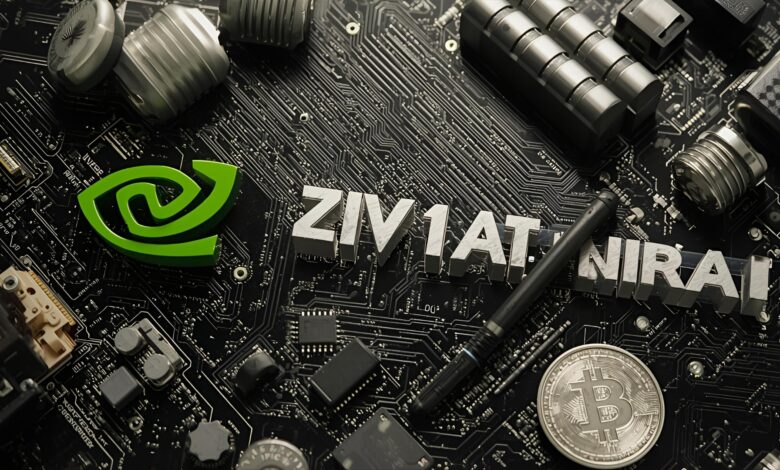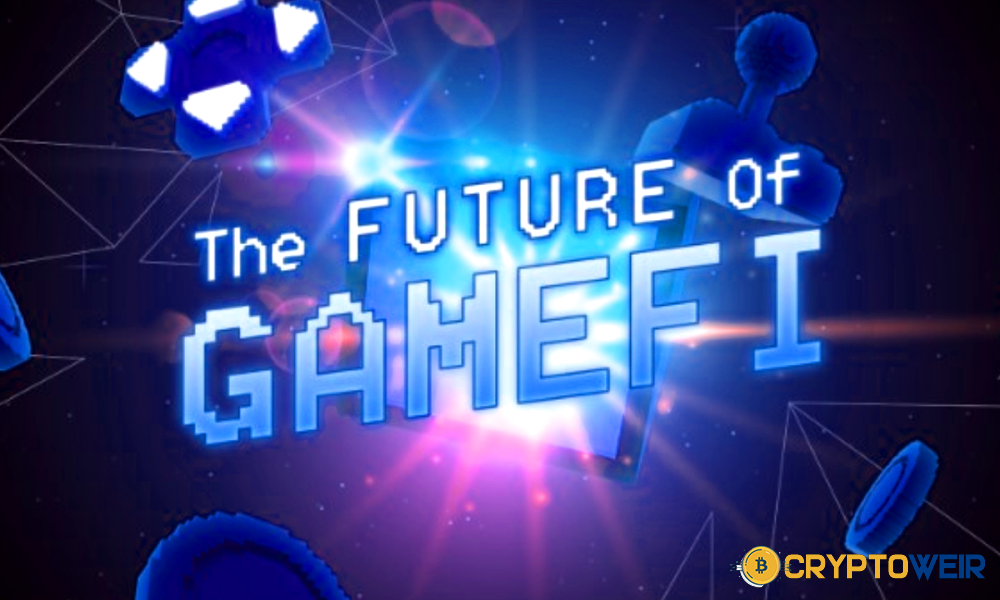NVIDIA $683M Bet on a Crypto-Miner Spinoff

NVIDIA’s $683 million investment in Nscale, a UK-based crypto miner spinoff from Arkon Energy, is more than another Capital infusion into the booming AI supply chain—it’s a signal that the lines between cryptocurrency mining infrastructure and AI data centres are dissolving fast. The deal, reported alongside the UK’s push for “sovereign AI” capabilities, positions a once-crypto-focused operation to deliver industrial-scale AI compute with NVIDIA Blackwell GPUs across new data centre campuses. In other words, infrastructure originally optimised for hash rates is now being refitted for AI training throughput, low-latency inference, and resilient power provisioning.
What makes this story particularly compelling is the origin of Nscale itself. The company spun out from crypto miner Arkon Energy in 2024, building on a deep bench of experience in high-density compute, power contracting, and thermal engineering—exactly the capabilities modern AI cloud providers need. Reports describing the funding have cited $683 million and, in some coverage of the broader UK build-out, around $700 million, but the throughline is clear: this is a major, strategic bet by NVIDIA on a crypto-native infrastructure team to scale AI compute in Britain.
From Mining Rigs to Model Training: Why a Crypto Miner Spinoff?
The pivot from crypto mining to AI data centres isn’t a fluke. Facilities built for mining already solve three of the hardest problems in hyperscale compute: access to cheap and reliable power, expertise in cooling and density, and operational know-how for running tens of thousands of accelerators at high utilisation. That operational DNA translates naturally from ASICs and GPUs hashing blocks to GPU clusters training large language models.
Nscale’s lineage via Arkon Energy gives it a head start in power markets, substation development, and thermal design—the same pain points that slow many green-field AI campuses. NVIDIA’s funding aligns those strengths with the Blackwell architecture roadmap, unlocking multi-megawatt blocks that can scale to tens of thousands of GB300/GB200 GPUs over the next two years. Coverage notes deployments that ramp UK capacity into the tens of thousands of GPUs—establishing a platform for AI supercomputing that can serve startups, enterprises, and national programs alike.
Strategic Rationale: Why NVIDIA Is Backing a Crypto-Rooted Player
NVIDIA benefits when capable partners can quickly stand up GPU capacity, manage power at scale, and deliver service-level reliability. Crypto miners that successfully pivoted—think CoreWeave, which began as a mining outfit before evolving into an AI infrastructure powerhouse—illustrate how mining-grade operations become AI-first clouds with the right incentives and hardware pipeline. NVIDIA has repeatedly deepened ties with such players to expand elastic GPU supply where demand is outpacing traditional data centre growth.
By investing $683 million in Nscale, NVIDIA is effectively seeding an operator that can convert power and real estate into AI compute on an aggressive timeline. In the UK context—where policymakers are prioritising domestic AI capacity—this partnership helps deliver sovereign infrastructure while ensuring the GPU stacks remain aligned with NVIDIA’s Blackwell ecosystem. The synergy is obvious: Nscale gets a marquee technology partner and pipeline; NVIDIA gets a trusted build-out partner to place more GPUs, more quickly, in a strategically important market.
What the Build-Out Looks Like: Data Centres, Power, and Blackwell
Reports describe a plan to deploy massive Blackwell GPU fleets across new and existing UK sites, with some coverage highlighting totals that could approach ~60,000 GPUs in the medium term as projects scale toward 2026–2027. Early phases target tens of megawatts per campus, with step-ups that bring dense AI pod capacity online in waves. This modular approach—common in both cryptocurrency mining and AI colocation—allows operators to commission power, racks, and networking fabric in sync with GPU deliveries.
For search engines and readers alike, the practical takeaways are:
-
Power-first design: Sites are sited near robust grid interconnects, often with pathways to renewables and grid-balancing contracts—a playbook crypto perfected to survive energy price swings.
-
Thermals at density: Liquid cooling and advanced airflow designs are table stakes when packing Blackwell GPUs at hyperscale. Miners’ prior work with extreme densities carries over to AI cluster efficiency.
-
Network fabric: AI centres need ultra-low-latency interconnects—think NVLink/NVSwitch fabrics and high-throughput InfiniBand/Ethernet—to bind thousands of GPUs into training-grade supercomputers.
While precise campus specs evolve with procurement and permitting, the direction is unmistakable: crypto-grade industrial sites are being tuned into AI factories.
The UK’s “Sovereign AI” Angle—and Why It Matters
This investment lands amid a broader UK policy drumbeat to “capture the opportunities of AI.” With domestic clusters, British researchers and enterprises get lower-latency access, data residency assurances, and reduced dependence on scarce transatlantic capacity. Coverage has linked NVIDIA’s funding to the UK’s sovereign AI narrative, where locally governed compute underpins everything from public-sector services to regulated industries that can’t ship sensitive data abroad for training.
For NVIDIA $683M Bet, supporting trusted regional partners amplifies its global moat: the world’s demand for AI compute doesn’t just need chips—it needs geographically distributed, power-rich, policy-aligned data centres. For the UK, welcoming a crypto miner spinoff turned AI builder is a pragmatic acknowledgement that infrastructure is infrastructure—and the fastest route to frontier-model readiness may run through operators who already know how to build at the bleeding edge of power and cooling.
How This Shapes the AI Infrastructure Market
The investment in Nscale highlights a continuing trend: crypto-native operators are becoming the AI infrastructure vanguard. Consider CoreWeave—once an Ethereum miner, now a $50B-plus public cloud for AI workloads with deep NVIDIA ties. The pattern is consistent: those who mastered commodity GPU fleets during mining have repurposed their skills for AI workloads, capturing share as demand for training and inference skyrockets.
Expect more of the following:
-
Acquisitions and partnerships that marry powerful assets with GPU supply.
-
Retrofits of existing mining sites into AI pods, leveraging substations and cooling footprints.
-
Regional specialisation, where data sovereignty, industrial policy, and grid characteristics shape where clusters land.
The $683 million figure is meaningful not just as a headline, but as a down payment on a new class of AI cloud built by teams with crypto DNA—capable of bringing Blackwell capacity online faster than traditional colocation providers.
Risks and Realities: Power, Policy, and Supply Chains
No hyperscale plan happens without friction. Operators must secure long-term power purchase agreements, navigate grid constraints, and manage permitting—all while the global race for NVIDIA GPUs keeps pricing and allocation tight. The UK’s sovereign ambitions can accelerate approvals, but they also impose compliance and security expectations.
There’s market risk, too. Just as crypto cycles whipsawed miners, the AI demand curve could normalise. However, AI is backed by diversified use cases—such as search, copilots, design tools, drug discovery, and simulation—that mitigate single-sector volatility. And unlike 2018’s crypto correction, today’s infrastructure can revenue-shift between training, inference, and even HPC workloads, making utilisation more resilient.
Why the Amount Differs Across Headlines
Some outlets report $683 million; others round the broader UK-aligned package to “$700 million.” This discrepancy stems from how reporters parse direct equity commitments versus associated infrastructure spending and partnership scope. The conservative reading for SEO clarity—and the one we emphasise here—is NVIDIA invests $683 million in Nscale, a crypto miner spinoff building AI infrastructure in the UK. Readers should understand that additional figures often reference adjacent campus investments, planned GPU purchases, or multi-party contributions across the build-out.
What It Means for Developers, Startups, and Enterprises
For teams training models, the practical outcomes are tangible:
-
More regional GPU capacity reduces queues and spot-market volatility.
-
Blackwell-class clusters promise better training efficiency and lower TCO per parameter—especially for mixture-of-experts and multimodal stacks.
-
Data residency in the UK unlocks workloads in finance, health, the public sector, and regulated AI that need local processing.
Ultimately, NVIDIA’s $683M investment helps shrink the gap between GPU demand and GPU availability—a core bottleneck in the AI economy.
Historical Footnote: NVIDIA, Crypto, and a Full-Circle Moment
It’s impossible to ignore the arc here. NVIDIA spent years navigating the turbulence of crypto demand, including regulatory scrutiny over disclosures related to mining-linked sales. The ecosystem has matured: the same compute-at-scale instincts that fueled mining are now the backbone of AI infrastructure—with NVIDIA at the centre, this time as strategic investor and technology kingmaker.
Conclusion
The headline writes itself: NVIDIA invests $683 million in a crypto miner spinoff to supercharge the UK’s AI infrastructure. But the deeper story is about convergence. As Nscale transforms crypto-hardened sites into AI supercomputing campuses, the UK gains a meaningful shot at sovereign compute, developers gain access to Blackwell GPUs at scale, and NVIDIA fortifies its multi-region AI cloud footprint.
Expect more miners-turned-AI-operators, more power-first campuses, and more national initiatives designed around local, compliant, high-density compute. This isn’t just Capital moving; it’s the AI stack industrialising—with lessons learned from crypto, and fuel provided by NVIDIA.
FAQs
Q: Did NVIDIA really invest $683 million in Nscale?
Yes. Multiple reports specify that NVIDIA invested $683 million into Nscale, the crypto miner spinoff from Arkon Energy. Some coverage describes the broader program near $700 million, but the core figure cited for the investment is $683 million.
Q: What exactly is Nscale, and how is it tied to crypto?
Nscale is an AI infrastructure company spun off from crypto miner Arkon Energy in 2024. It’s leveraging mining-grade power and cooling expertise to build AI data centres in the UK.
Q: Which GPUs will power these UK data centres?
Coverage highlights NVIDIA Blackwell systems—GB300/GB200-class GPUs—deployed at multi-megawatt scale, with total UK GPU counts reaching into the tens of thousands as campuses mature.
Q: Why is the UK significant in this deal?
The UK is promoting sovereign AI capacity, enabling researchers and companies to access domestic, compliant computing resources. NVIDIA’s $683M investment supports these policy goals while expanding regional AI infrastructure.
Q: Is this part of a larger trend of miners pivoting to AI?
Absolutely. Former miners, such as CoreWeave, demonstrate how crypto-hardened operators can become leaders in AI cloud services. Nscale is the latest proof that mining skill sets map well to AI hyperscale.
See More: Bittensor Blockchain Network | AI Mining & TAO Token Guide









